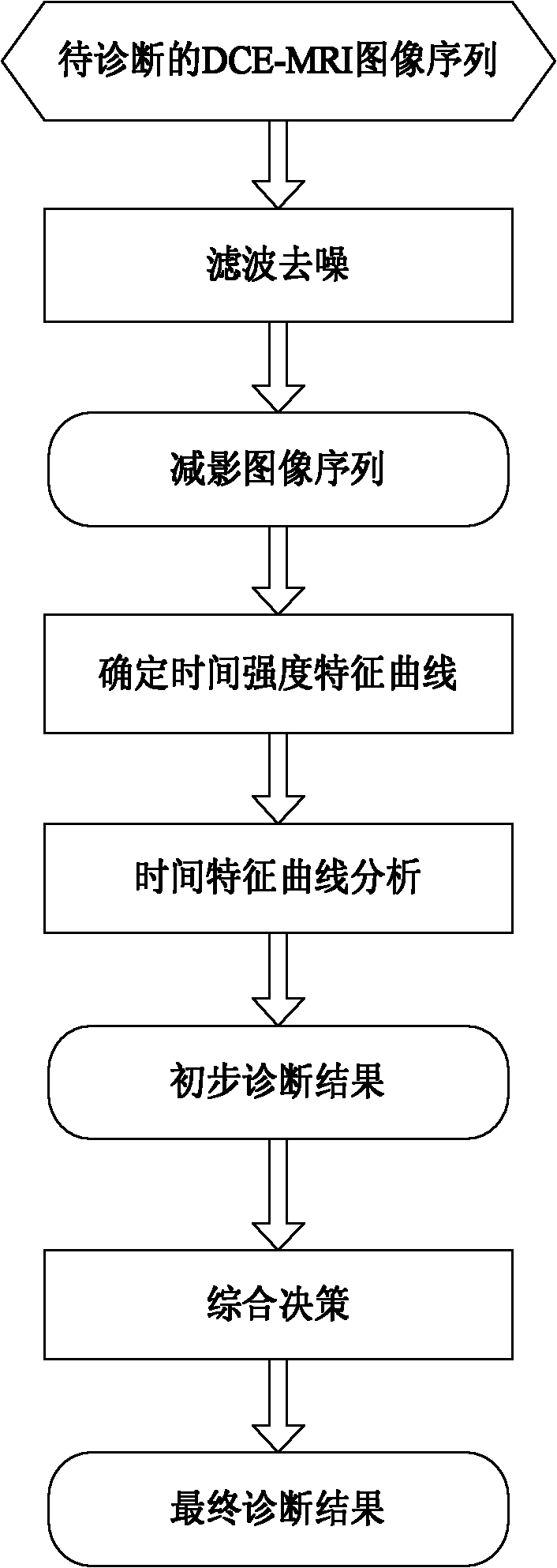Time intensity characteristic-based computer aided method for diagnosing benign and malignant breast lesions
A computer-aided, time-intensive technology, applied in diagnosis, calculation, diagnostic recording/measurement, etc., can solve the problems of missed or misdiagnosed lesions, increased radiologist reading pressure, and difficulty in ensuring the accuracy and validity of lesion diagnosis. Achieve the effect of improving diagnostic efficiency and accuracy, and improving diagnostic efficiency and accuracy
- Summary
- Abstract
- Description
- Claims
- Application Information
AI Technical Summary
Problems solved by technology
Method used
Image
Examples
Embodiment Construction
[0025] The present invention will be described in further detail below in conjunction with accompanying drawings and examples.
[0026] Such as figure 1 , 2 As shown, the inventive method comprises the following processing steps:
[0027] (1) In the input module, select the suspicious layer image sequence in the patient's DCE-MRI image set according to the scanning order;
[0028] DCE-MRI image data is a multi-sequence, multi-temporal image set. Multi-sequence can obtain the complete spatial information of the lesion, while multi-temporal phase can observe the intensity changes at different times at the same level and provide the physiological and metabolic information of the lesion at this level. Such as image 3 As shown, the processing sequence of image data among the present invention is: first according to Figure 4 The processing steps shown in analyze the phase information of each layer in the sequence image set of suspicious layers, and then combine the diagnostic...
PUM
 Login to View More
Login to View More Abstract
Description
Claims
Application Information
 Login to View More
Login to View More - R&D
- Intellectual Property
- Life Sciences
- Materials
- Tech Scout
- Unparalleled Data Quality
- Higher Quality Content
- 60% Fewer Hallucinations
Browse by: Latest US Patents, China's latest patents, Technical Efficacy Thesaurus, Application Domain, Technology Topic, Popular Technical Reports.
© 2025 PatSnap. All rights reserved.Legal|Privacy policy|Modern Slavery Act Transparency Statement|Sitemap|About US| Contact US: help@patsnap.com



